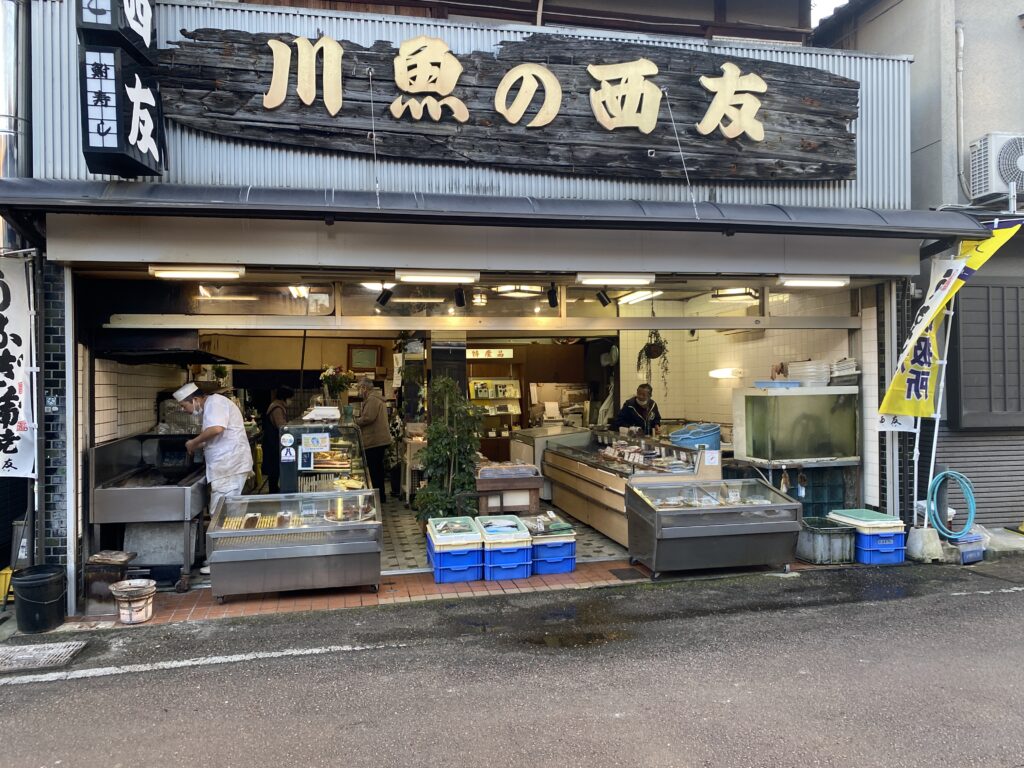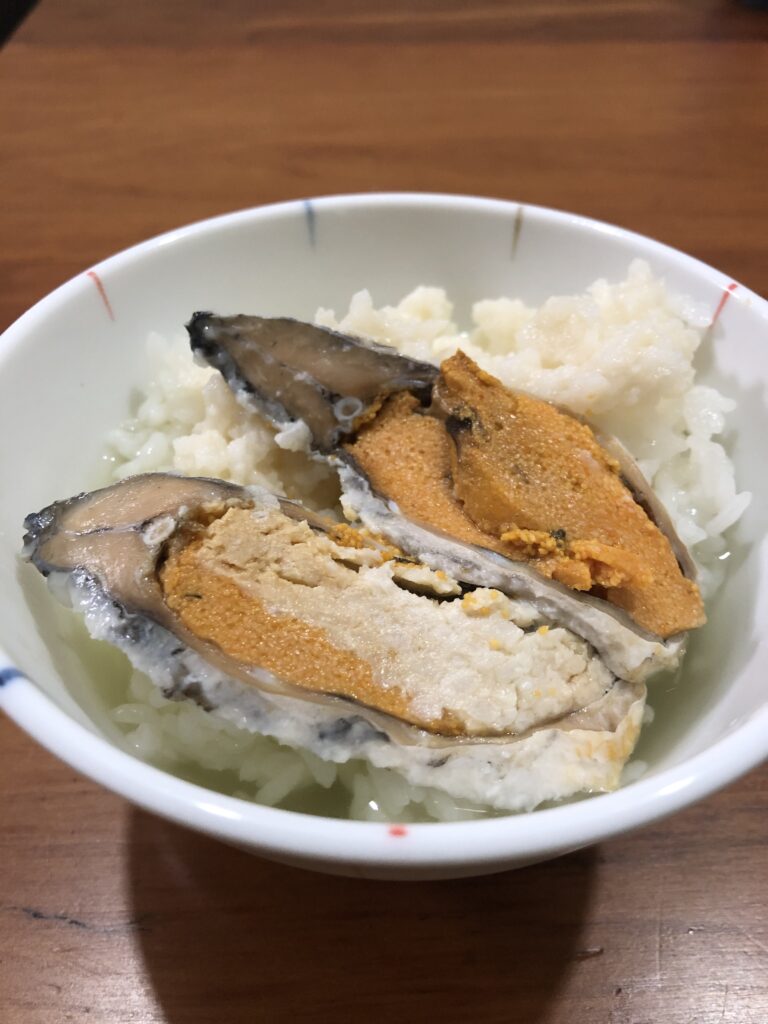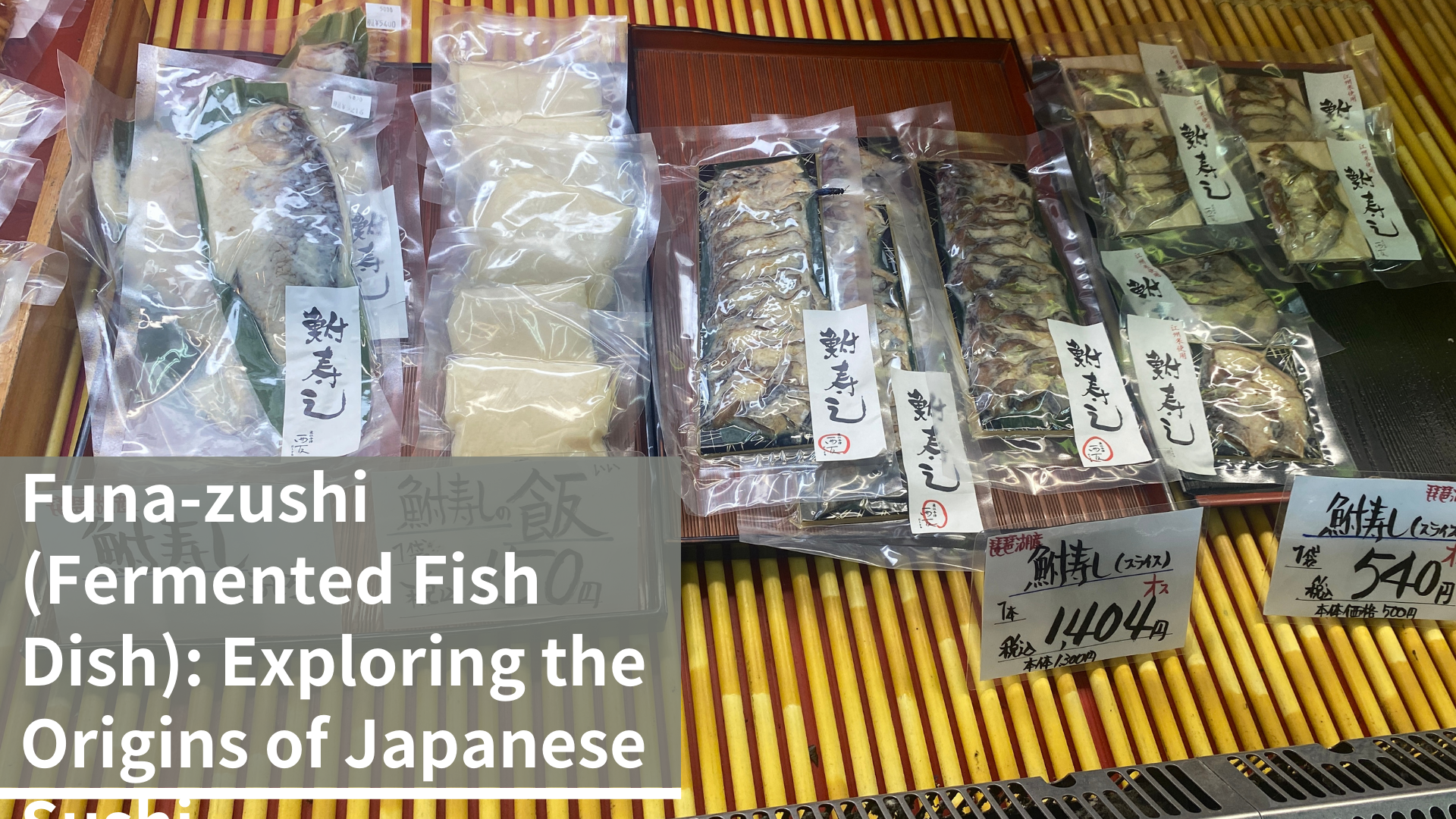What image comes to mind when you hear the word sushi? Perhaps it’s fresh tuna, yellowtail, sea urchin, or salmon roe deliciously perched atop rice. However, the history of sushi is much deeper and different.
The true origin of sushi lies in a preserved food made by combining rice and fish and fermenting it over a long period. Yes, sushi was originally a form of preserved food. And this ancient form of sushi still exists in Japan today.
The most famous is Funa-zushi from Lake Biwa. Funa-zushi, a specialty of Lake Biwa, is one of Japan’s oldest fermented foods. It originates from traditional fish preservation methods in Southeast Asia, primarily using a type of fish called Nigoro-buna, often carrying eggs. The method varies among producers and households, but generally involves removing scales, gills, and innards from the fish, packing the body cavity with salt to pickle it, and then maturing it in rice for six months to several years. This rice maturing process gives Funa-zushi its unique flavor and preservability. It’s a fermented food product resulting from the action of lactic acid bacteria and yeast, known for its distinctive taste.

There are various ways to eat Funa-zushi. Commonly, it’s enjoyed sliced as is or as ochazuke (tea over rice). I personally feel that making it into ochazuke enhances its flavor. The egg part of Funa-zushi has a unique cheese-like aroma and texture, adding to its characteristic taste.
Served cold, the flavor of refrigerated Funa-zushi dramatically intensifies with the addition of warm tea. However, its strong aroma might be overwhelming for first-timers, making it seem inedible. I once witnessed someone eating Funa-zushi across a river during a survey, and its aroma was so intense it reached me on the opposite bank. Yet, this strong aroma enhances the unique umami and sourness of Funa-zushi.

While many might find the taste of Funa-zushi challenging, it’s worth trying at least once. This is because Funa-zushi is not just delicious food but a culmination of a long history and preservation techniques. When eating traditional food, it’s important to appreciate not just the taste but also the ingenuity and balance of flavors from a time before modern preservation techniques. By doing so, one can have a cultural experience unlike any other.




コメント